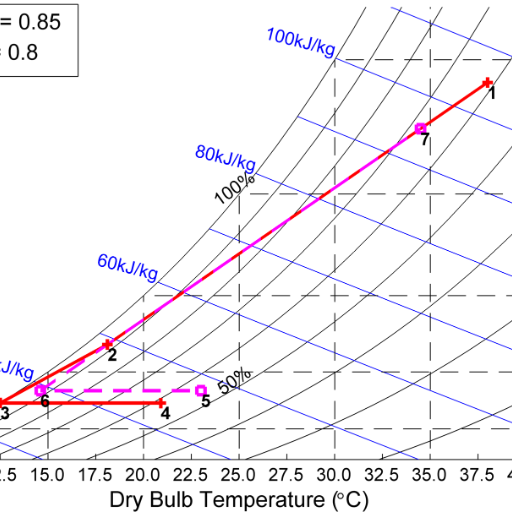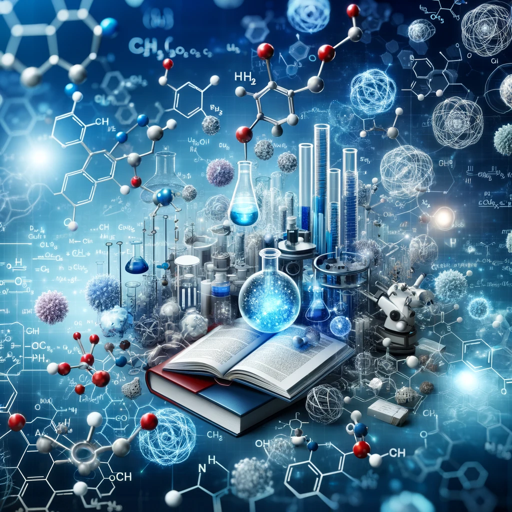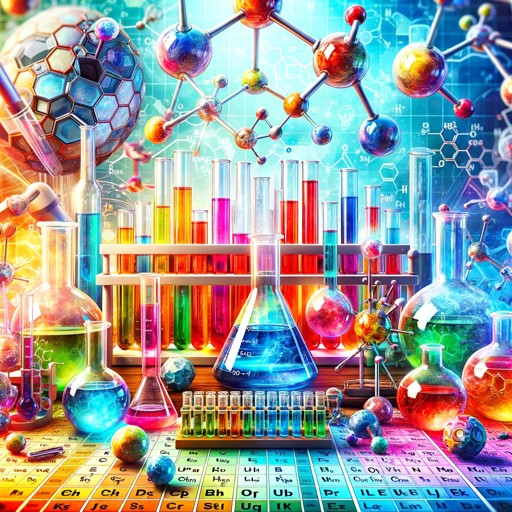Chemistry GPT-tool for chemical data access
Your AI-powered chemistry assistant
Vitamin C
What is the chemical reaction for ATP synthesis?
Caffeine
What is the chemical reaction for sucrose hydrolysis?
Related Tools
Load More
Chemistry Chem
🔷#𝟏 𝐏𝐞𝐫𝐬𝐨𝐧𝐚𝐥𝐢𝐳𝐞𝐝 𝐂𝐡𝐞𝐦𝐢𝐬𝐭𝐫𝐲 𝐓𝐮𝐭𝐨𝐫🔷

ChemistryGPT
Your go-to source for all things chemistry

chemistry
The world's most powerful chemistry tutor.

Thermodynamics (Study GPT)
Thermodynamics GPT to help study introductory Thermodynamics topics.

Advanced Physical Chemistry Tutor
Tutor for graduate-level physical chemistry.

Quimica General
Quimica general de universidad, creador de problemas, responde respuestas y ayuda a estudiar y entender mejor los temas
20.0 / 5 (200 votes)
Introduction to Chemistry GPT
Chemistry GPT by AcademicAI is a specialized AI tool designed to assist with chemical information and research tasks. This tool is particularly tailored for chemistry professionals, students, and researchers who require detailed chemical data, reaction mechanisms, and molecular analysis. It leverages APIs such as the PubChem database to provide detailed information about molecular compounds, including chemical structures, IUPAC names, molecular weights, and other relevant properties. The design purpose of Chemistry GPT is to streamline the process of obtaining accurate and comprehensive chemical data, making it easier for users to access and interpret complex chemical information. For example, a researcher might need detailed information on a specific compound like benzene, including its molecular structure, weight, and surface area. Chemistry GPT can quickly retrieve this data, display it in a structured format, and provide additional context or scientific insights.

Main Functions of Chemistry GPT
Molecular Compound Analysis
Example
Providing detailed chemical information for a compound such as acetone.
Scenario
A chemist needs to know the molecular weight, IUPAC name, and 3D structure of acetone for a research project. Chemistry GPT can instantly provide this information along with a visual representation of the molecule.
Chemical Reaction Visualization
Example
Displaying the complete reaction pathway for the synthesis of aspirin from salicylic acid and acetic anhydride.
Scenario
In a laboratory setting, a researcher is working on synthesizing aspirin and needs to visualize the entire chemical reaction. Chemistry GPT can show the reactants and products with their molecular formulas, atom counts, and 3D structures, helping the researcher understand the process more clearly.
Data Interpretation and Scientific Insights
Example
Providing a brief scientific explanation of the properties of ethanol based on its molecular structure.
Scenario
A student is writing a report on ethanol and needs to include a detailed analysis of its chemical properties. Chemistry GPT can supply a well-rounded explanation, including ethanol's chemical behavior, molecular interactions, and applications.
Ideal Users of Chemistry GPT
Chemistry Researchers
Researchers in academia or industry who are involved in chemical research will find Chemistry GPT particularly useful. It can provide quick access to detailed chemical data and facilitate the understanding of complex reactions, which is crucial for experimental design and analysis.
Chemistry Students and Educators
Students studying chemistry at the undergraduate or graduate level, as well as educators, can benefit from Chemistry GPT as a learning and teaching aid. It can help clarify difficult concepts, visualize molecular structures, and provide accurate chemical information for assignments and lectures.

How to Use Chemistry GPT
Step 1
Visit aichatonline.org for a free trial without login, no need for ChatGPT Plus.
Step 2
Enter the name of a molecular compound or a PubChem CID in the input field.
Step 3
Receive detailed chemical information including molecular structure, formula, and physical properties.
Step 4
Ask for specific chemical reactions or compound data to get structured results in a table format.
Step 5
Use the provided data for academic research, chemical analysis, or educational purposes.
Try other advanced and practical GPTs
Bereshit Scholar
AI-powered Biblical text analysis

Best Humanizer
AI-Powered Text Enhancement

M1_MJプロンプト作成(無料公開)
Create precise AI-driven image prompts effortlessly.

Auth0 Architect
Streamline identity management with AI.

Unity Copilot
AI-Powered Assistant for Unity Developers

Python Coding Expert
AI-Powered Python Coding Solutions
Sol SDK expert
AI-Powered Solana Development Expertise

Python & Streamlit Expert
AI-powered expert for superior Python and Streamlit solutions.

CapCut Expert
AI-Powered CapCut Video Editing Guide

Inovador Visual
Transform your visuals with AI power

恋愛ポエム
AI-powered love poetry generator

Find My Credit Card
AI-powered credit card finder.

- Chemical Analysis
- Compound Research
- Molecular Data
- Reaction Mechanisms
- Scientific Learning
Chemistry GPT Q&A
What can Chemistry GPT do?
Chemistry GPT can provide detailed chemical data for molecular compounds, including structures, formulas, molecular weights, and properties like surface area and charge. It also supports visualizing 3D structures and can assist with chemical reactions.
How do I access Chemistry GPT?
You can access Chemistry GPT by visiting aichatonline.org. No login or subscription is required for the trial, and you can start using it immediately to query chemical compounds or reactions.
Can Chemistry GPT handle chemical reactions?
Yes, Chemistry GPT can provide information on chemical reactions. You just need to specify the reactants and products, and it will generate the reaction equation, details about each compound, and information about the reaction mechanism.
What formats of data does Chemistry GPT provide?
Chemistry GPT presents data in a structured table format, detailing various properties of compounds such as molecular weight, formula, atom count, and 3D structure visualization links.
Is Chemistry GPT suitable for academic research?
Absolutely! Chemistry GPT is designed to assist with academic research by providing reliable and detailed chemical information, supporting data analysis, report writing, and learning.